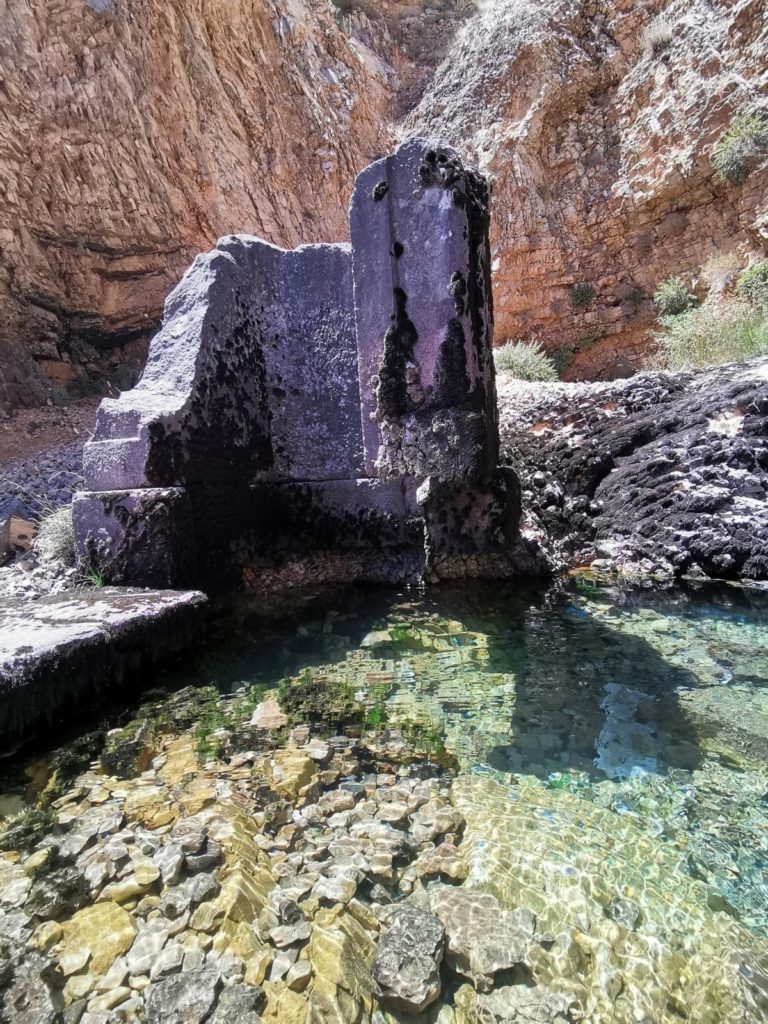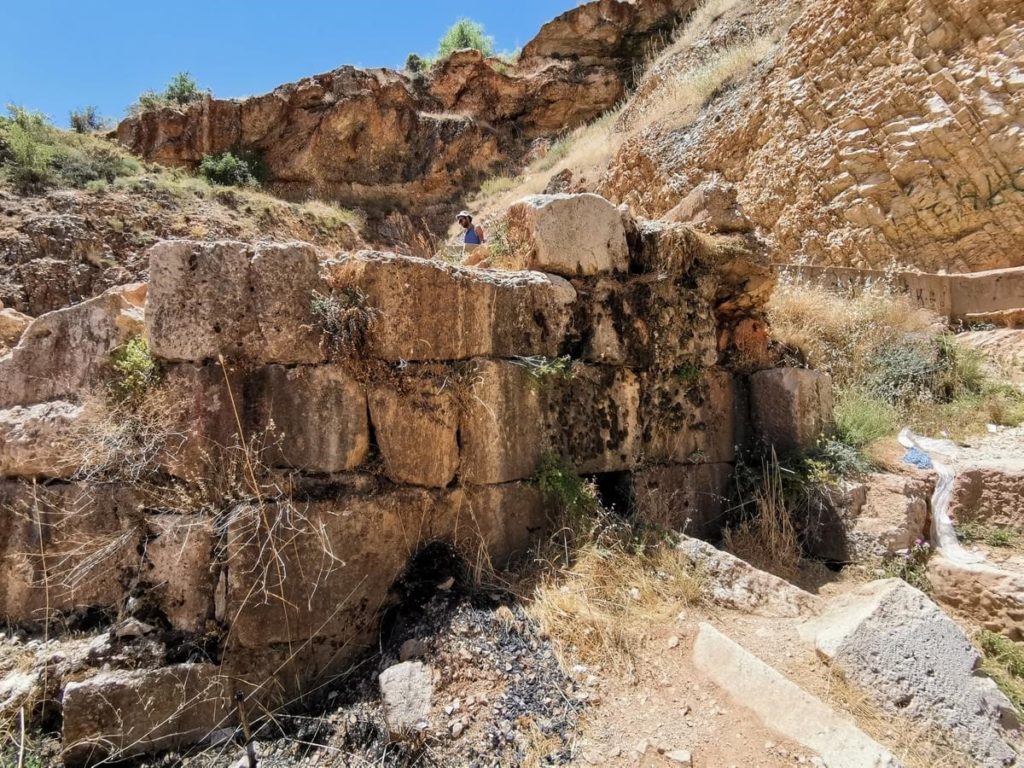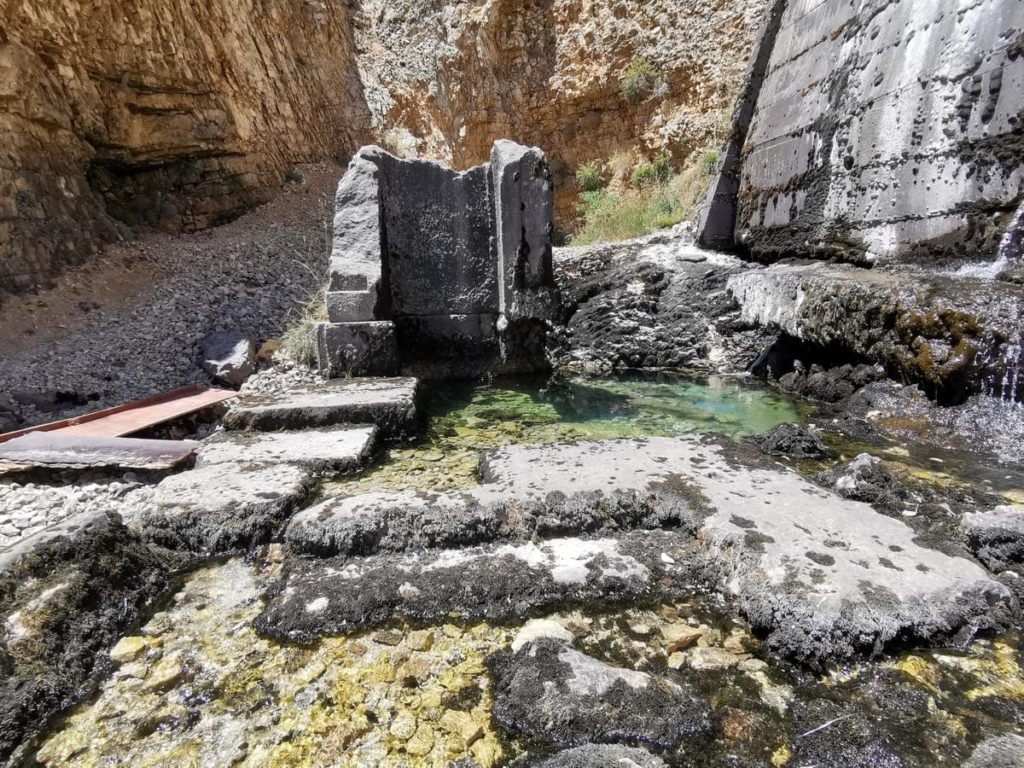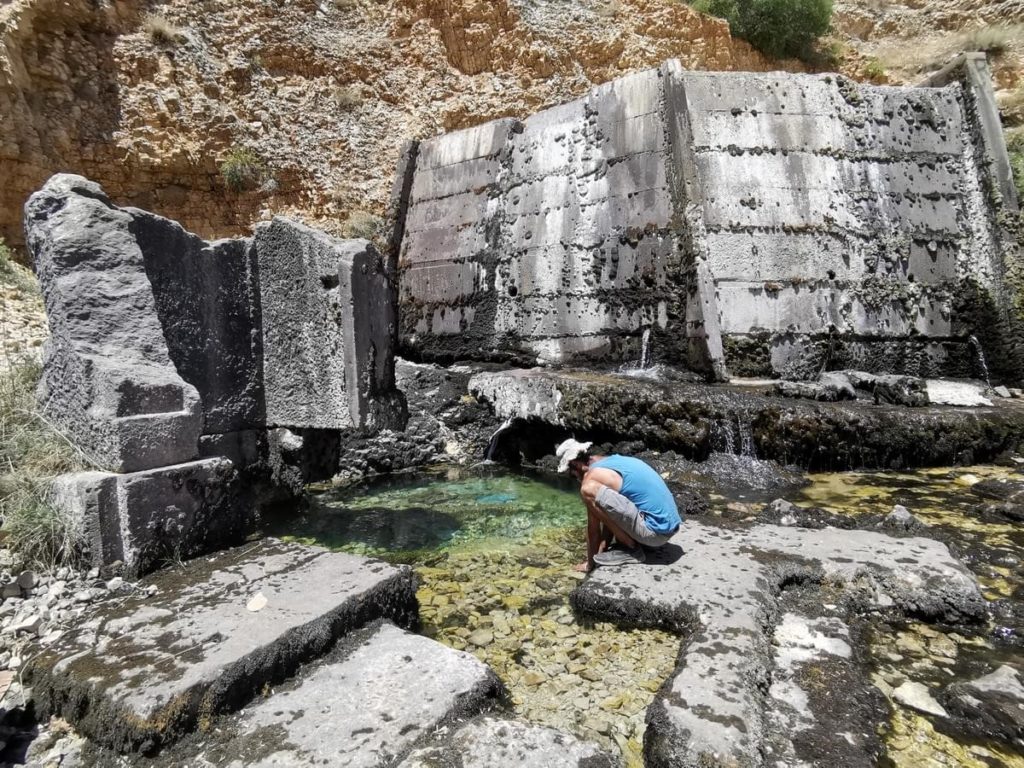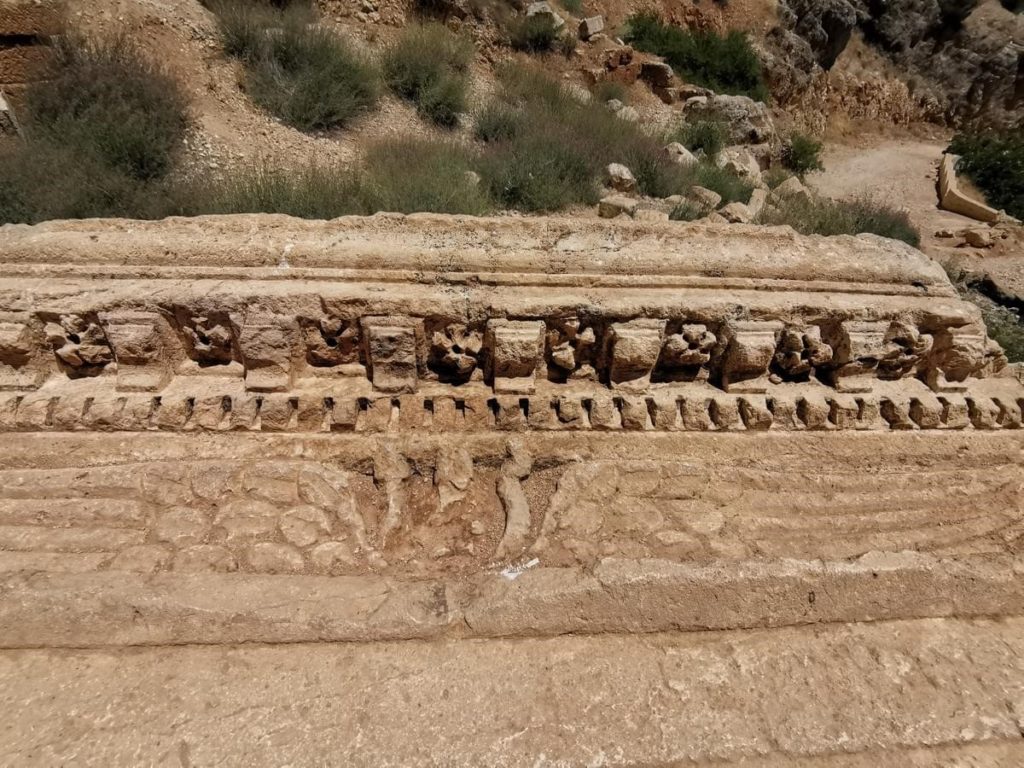The village of Yammouneh houses the ruins of a Roman sanctuary that occupies the western shore of the lake where the waters of the spring flow.
Structure
According to certain portions of the wall still in place to the south and to the east, archaeologists reconstructed a rectangular peribola (a court enclosed by a wall) with an estimated length of between 60 and 80m. The foundation walls spotted inside this enclosure cover a width of about 17m. They probably supported the temple whose blocks are scattered on the site.
To the east, one of these blocks belongs to a staircase. Since it is in place, it can be assumed that the temple stood on a podium and opened to the east. Opposite the presumed entrance to the building, the courtyard retains its paving in places. It is there, in the median axis of the temple, that the monumental altar is erected, the location of which is indicated by the presence of a slab provided with mortises.
Deity
Since the beginning of the 20th century, excavators have unearthed numerous monuments on site, including an architrave decorated with a winged solar disk and a statue of Heliopolitan Venus (now in the Baalbek museum).
This last finding is added to others which perhaps allow us to attribute the sanctuary to the Heliopolitan triad: limestone statuette representing a shepherd god similar to Heliopolitan Mercury; an altar dedicated to the Heliopolitan Jupiter, discovered not far from the ruins of the temple, in front of a small distyle building associated with the source.
Karim Sokhn
Tour Operator & Tour Guide
References:
La vie Religieuse Au Liban Sous L’Empire Romain – Julien Aliquo
